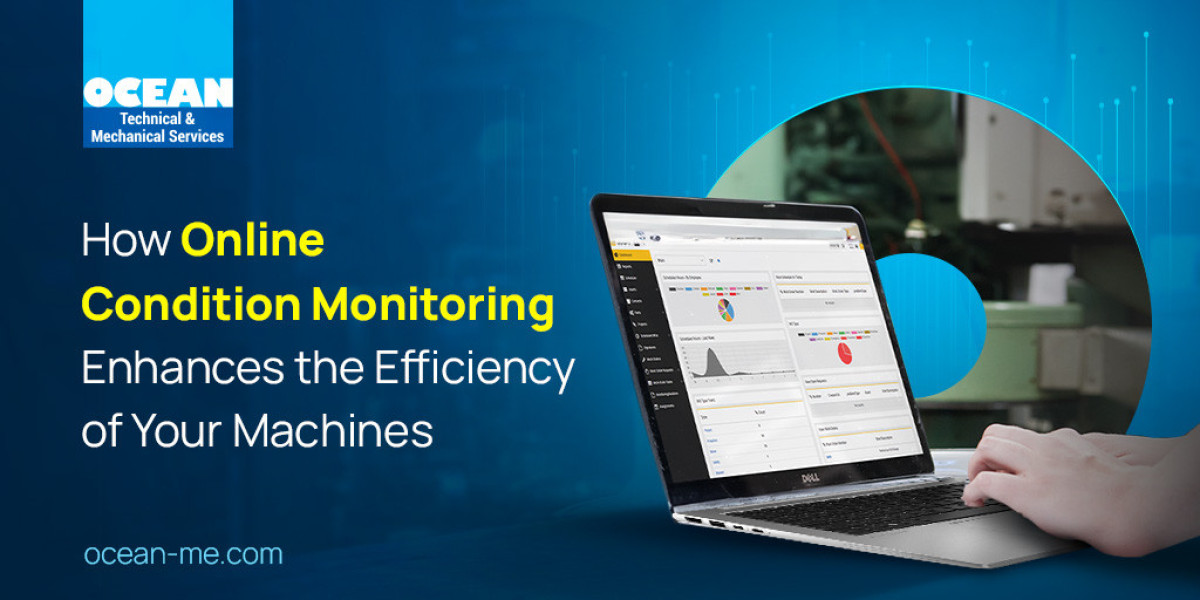The Power of Condition Monitoring Services in Modern Industries
Introduction
In the rapidly evolving landscape of modern industries, the importance of maintaining equipment efficiency and minimizing downtime cannot be overstated. Enter condition monitoring services – a game-changer for businesses striving to enhance operational efficiency, ensure safety, and reduce maintenance costs. This blog will delve into the intricacies of condition monitoring, exploring its benefits, key technologies, and real-world applications.
What is Condition Monitoring?
Condition monitoring is a proactive approach to maintenance where the operational state of machinery is continuously or periodically assessed. By monitoring parameters such as vibration, temperature, pressure, and sound, it's possible to detect early signs of wear and tear, misalignment, or other issues before they escalate into costly failures.
Benefits of Condition Monitoring
Reduced Downtime: By identifying potential problems early, condition monitoring allows for planned maintenance activities, which can be scheduled during non-peak hours, thereby reducing unplanned downtime.
Cost Savings: Predictive maintenance, facilitated by condition monitoring, reduces the need for emergency repairs and extends the lifespan of machinery, leading to significant cost savings.
Improved Safety: Early detection of equipment issues prevents catastrophic failures that can pose safety hazards to workers.
Enhanced Productivity: Reliable machinery performance ensures continuous production processes, contributing to overall productivity and profitability.
Key Technologies in Condition Monitoring
Vibration Analysis: Vibration sensors measure the frequency and amplitude of machinery vibrations. Anomalies in vibration patterns can indicate misalignment, imbalance, or bearing failures.
Thermography: Infrared cameras detect heat patterns in equipment. Overheating can signal electrical issues, lubrication problems, or mechanical failures.
Ultrasound Testing: Ultrasonic sensors detect high-frequency sounds produced by friction or turbulent fluid flow, which can indicate leaks, electrical discharges, or bearing failures.
Oil Analysis: Regular analysis of oil samples can reveal the presence of contaminants or metal particles, indicating wear and tear within the machinery.
Acoustic Emission: This technique detects high-frequency sound waves emitted by the rapid release of energy from localized sources within materials, useful for identifying cracks or other structural faults.
Real-World Applications
Manufacturing: In the manufacturing sector, condition monitoring is crucial for ensuring the continuous operation of critical machinery such as CNC machines, conveyors, and hydraulic systems.
Energy Sector: Wind turbines, hydroelectric plants, and thermal power stations rely heavily on condition monitoring to prevent failures and optimize performance.
Automotive Industry: Assembly lines in the automotive industry benefit from condition monitoring by ensuring that robotic systems and assembly machinery operate efficiently.
Aerospace: Aircraft maintenance uses condition monitoring to ensure the reliability and safety of critical components, reducing the risk of in-flight failures.
Oil and Gas: In the oil and gas industry, condition monitoring helps in maintaining the integrity of pipelines, pumps, and compressors, thereby preventing leaks and ensuring smooth operations.
Implementing Condition Monitoring
Assessment: Begin with an assessment of critical machinery and processes to determine which assets would benefit most from condition monitoring.
Selection of Technology: Choose the appropriate condition monitoring technologies based on the specific needs of your machinery and industry.
Integration: Integrate sensors and monitoring equipment with existing systems. Ensure that data collection is seamless and that the monitoring system can provide real-time insights.
Training: Train maintenance staff and operators on the use of condition monitoring tools and the interpretation of data.
Continuous Improvement: Regularly review monitoring data to identify trends and make informed decisions about maintenance and equipment upgrades.
Conclusion
Condition monitoring services represent a critical advancement in industrial maintenance strategies. By leveraging advanced technologies to monitor the health of equipment, businesses can achieve significant improvements in efficiency, cost savings, safety, and productivity. As industries continue to evolve, the role of condition monitoring will only become more central to operational success.
Investing in condition monitoring is not just about preventing failures – it's about building a proactive, resilient, and efficient operational model that can adapt to the challenges of the modern industrial landscape.








